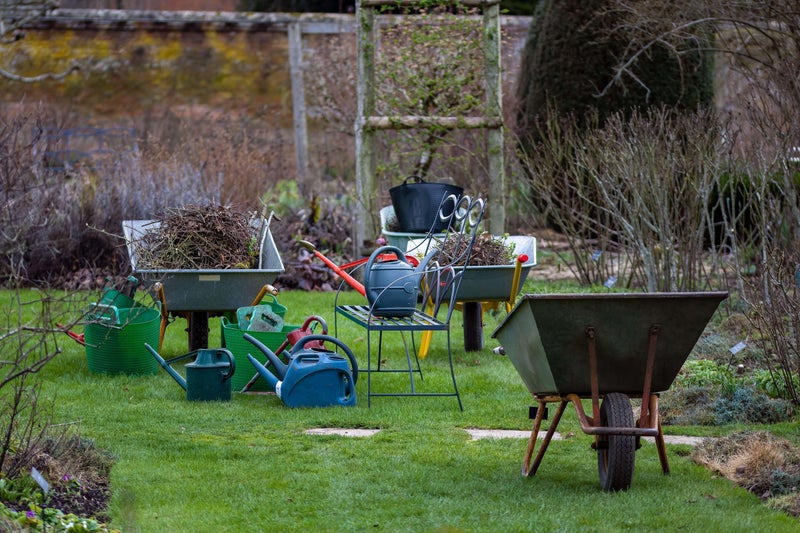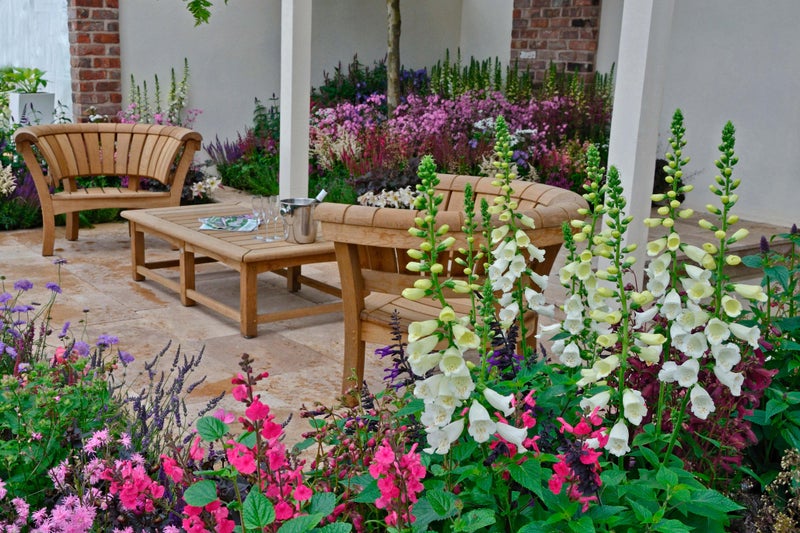The weather may still be cold and cloudy, but buds are already starting to appear so it’s time to get your garden ready for spring before the growth spurt begins. You could make time for a quick tidy-up, washing furniture and ornaments, turning your compost heap and cleaning patio pots. Follow these tips on jobs to do in the garden to give you a head start on spring. Prune fruit. “Prune apple and pear trees. Don’t cut too much off, as you don’t want to put the tree under stress and you don’t want them to produce a load of top growth. Ideally you’re looking for an open goblet shape, with a hand span between each branch. The easiest way to think about it is that the pruning allows a bird to be able to fly through the branches.
“We always start on the laterals on the outside, taking them back to one to two buds. Go for the rule of dead, diseased, damaged and anything that’s crossing. Go back, look at your shape, see what you think, and do it with care,” O’Neill advises. Beginners should look at a pruning guide to ensure they don’t cut too much off, she adds. Only prune currants and gooseberries once they are over two years old, she advises.
“Blackcurrants fruit on new growth, while red and whitecurrants fruit on old growth. Again, you’re just taking them back.”. Use green manure. If you’ve grown green manure such as red clover or winter tares, make sure you dig that in to the bed three to four weeks before use. Green manure is any kind of crop which covers and protects the soil, improving soil structure and nutrition. “If you are going to direct-sow (crops) in March, make sure you’ve dug in your green manure in February,” O’Neill suggests.
If you’ve used rye grass as a green manure, it can inhibit seed germination so wait a month after digging it in before you start sowing, she adds. Mulch your soil. “It’s always a good idea to regularly mulch your soil to protect it,” O’Neill advises. “If you have your own compost, use that, or alternatively you can get green compost from local authorities.”. Clear your pond. If your pond has been netted over winter, remove the netting and clear any debris including leaves, and cut back pond plants which have died off.
Plant tender perennials in pots for summer blooms. “By starting these indoors, you can encourage new growth while waiting for warmer weather to transplant them outdoors in spring,” explains Rowson. She advises: “Make sure to place your tender perennials somewhere safe from frost and with a bit of natural light, such as in a warm, light greenhouse, to promote the growth of new shoots.”. Divide snowdrops.
“It is best to divide snowdrops now to help them naturalise over time, leading to more flowers the following year,” Rowson advises. “You can use a shovel or trowel to lift the flowers out of the ground with their roots, then split through the roots to create two clusters. Plant these halves in your chosen location and watch as they form new colonies in new patches of your garden, creating a beautiful perennial display for years to come.”.
Cut back group 2 and 3 clematis. Group 2 clematis flower on old wood in late spring or early summer and again in late summer. They include large flowered types including ‘Nelly Moser’ and ‘The President’. Cut them back in late winter or early spring to a pair of strong healthy buds, leaving around 1m on the plant (or around 30cm if it is a newly planted clematis). Group 3 clematis including ‘Perle d’Azur’ and ‘Jackmanii’ bloom from summer to autumn and should be cut back in February or March to a pair of strong, healthy buds around 30cm (12in) above soil level.
Tidy deciduous plants. After leaving stems on herbaceous perennials such as veronicastrum, echinaceas and rudbeckias to provide habitat for overwintering insects and seeds for birds, you can now cut them down, as new shoots may already be appearing at the base, O’Neill advises. Climbing roses can also be pruned in February. Finish planting bare-root trees and shrubs. It’s the last chance to plant bare-root trees, roses and shrubs which you’ve bought in their dormant state, unless the ground is frozen, O’Neill advises.
Carry out repairs. Tidy your shed, repair your tools and make good any structures such as trellis and fencing, which may have come loose or been damaged in the winter, O’Neill suggests. Climbers such as clematis and honeysuckle will particularly benefit from this, so you can tie them in as they grow in the spring. Stake your plants. “Get all your staking done now if you know what plants are going to need support, particularly in the ornamental garden. We have a plant called baptisia which goes absolutely crazy and it’s much better to stake it now that to try to do it in the growing season.”.


























.jpeg?trim=47,0,1708,0&quality=75&auto=webp&width=1000)



